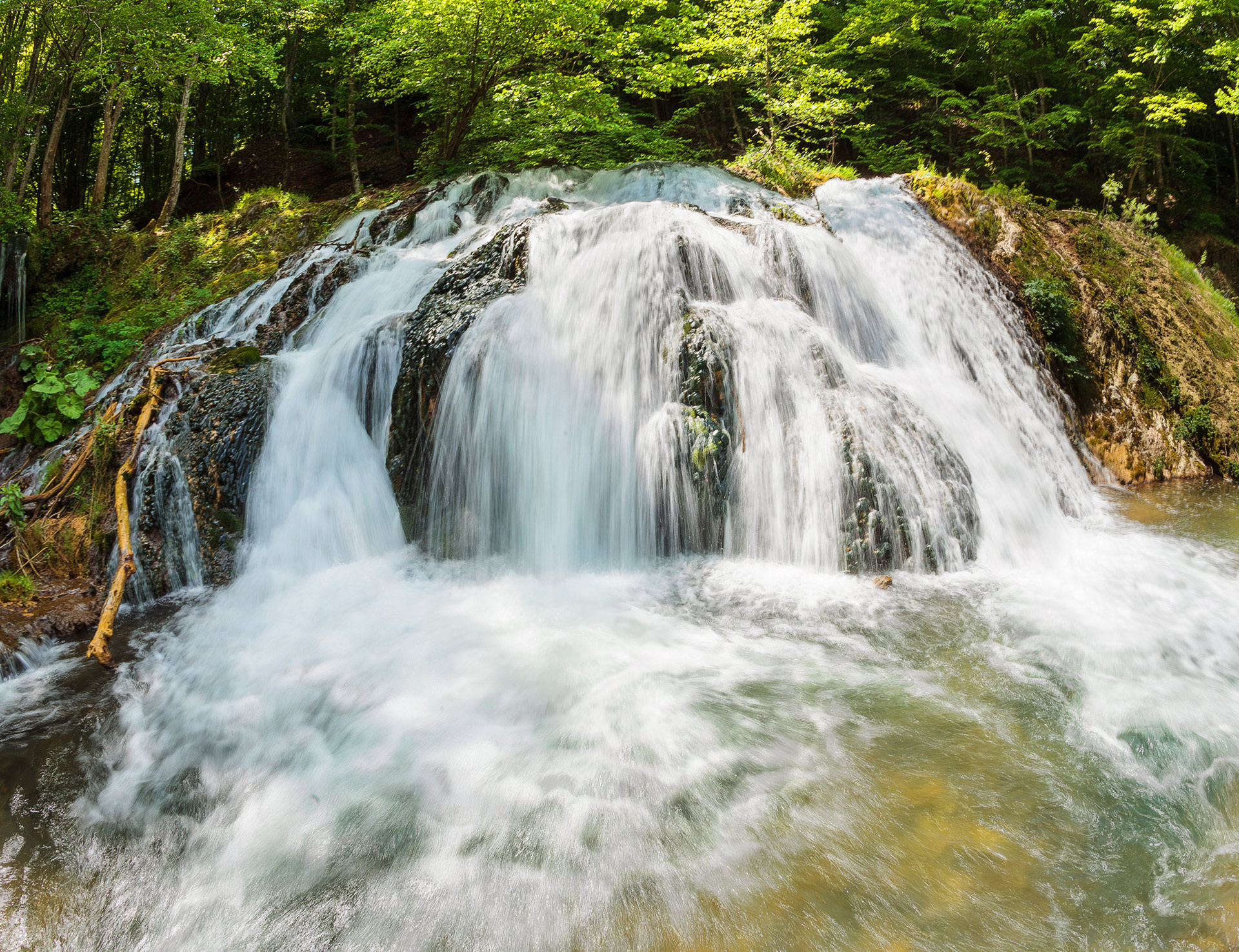
Vegetation
The vegetation of the Nature Park represents a collection of all the vegetative communities (phytocenosis) within the boundaries of the protected area.
The vegetation of Strandja features phytocenotic specifics, which are unique for Europe. It refers to the biome of the broad-leaved deciduous forests of the temperate climate – the most widespread biome on the continent, but unlike the forests of this biome, the forests in Strandja are distinguished by edificators and dominants of the euxeinos and sub-euxeinos flora or with significant presence of such floral elements. Most of the mesophilic forests of Fagus orientalis have an evergreen undergrowth of laurel shrubs, most often Strandja Rhododendron ponticum, which is typical for the south-euxeinos flora and is widespread in the West Caucasus, Colchis and the Black Sea coast of Asia Minor, while in Europe it has been preserved only in Strandja. These forests are also distinguished physiognomically from the deciduous forests of the moderate climate and form their own sub-biome.
 The forests in Strandja, which occupy around 3/4 of the territory of the Nature Park, are remnant of the tertiary vegetation, preserved due to its remoteness from the Quaternary glaciations, mild winter, high rainfall and air humidity. A characteristic feature of the Strandja forests is the inversion, a process in which mesophilic beech-tree forests with rhododendron ponticum undergrowth take parts of the valley slopes and oak forests extend over them. Compared to the vegetation in Colchis and Transcaucasia, the composition of the tertiary relict species in the vegetation of Strandja is highly depleted. This is especially visible along the Strandja coast, part of the Black Sea botanico-geographical region as well as the far west parts of the Park, which fall under the jurisdiction of the Fakia region of Strandja County. The most widespread in these regions are the Cerris-Quercus frainetto forests, followed by oak-hornbeam ones, which are defined as sub-euxeinos habitats. The communities of Mediterranean and sub-Mediterranean type also have considerable presence amidst the vegetation of the Nature Park: thermophilic oak forests with undergrowth of evergreen sclerophyllous shrubs such as Erica arborea, Ruscus aculeatus or grass cover of Hypericum calycinum, as well as undergrowth of Phillyrea latifolia, Cistus incanus, Cistus salvifolius and others. The undergrowth of Carpinus orientalis have strong secondary distribution, mainly due to the anthropogenic factor. The xerothermic grasslands, which occupy large areas along the coast and the western part of the Park, belong to the derivative vegetation, as they formed at the place of forests destroyed by man in the past. The most widespread are the communities of the Chrysopogon gryllus, Bothriochloa ischaemum, and the Poa bulbosa.
The forests in Strandja, which occupy around 3/4 of the territory of the Nature Park, are remnant of the tertiary vegetation, preserved due to its remoteness from the Quaternary glaciations, mild winter, high rainfall and air humidity. A characteristic feature of the Strandja forests is the inversion, a process in which mesophilic beech-tree forests with rhododendron ponticum undergrowth take parts of the valley slopes and oak forests extend over them. Compared to the vegetation in Colchis and Transcaucasia, the composition of the tertiary relict species in the vegetation of Strandja is highly depleted. This is especially visible along the Strandja coast, part of the Black Sea botanico-geographical region as well as the far west parts of the Park, which fall under the jurisdiction of the Fakia region of Strandja County. The most widespread in these regions are the Cerris-Quercus frainetto forests, followed by oak-hornbeam ones, which are defined as sub-euxeinos habitats. The communities of Mediterranean and sub-Mediterranean type also have considerable presence amidst the vegetation of the Nature Park: thermophilic oak forests with undergrowth of evergreen sclerophyllous shrubs such as Erica arborea, Ruscus aculeatus or grass cover of Hypericum calycinum, as well as undergrowth of Phillyrea latifolia, Cistus incanus, Cistus salvifolius and others. The undergrowth of Carpinus orientalis have strong secondary distribution, mainly due to the anthropogenic factor. The xerothermic grasslands, which occupy large areas along the coast and the western part of the Park, belong to the derivative vegetation, as they formed at the place of forests destroyed by man in the past. The most widespread are the communities of the Chrysopogon gryllus, Bothriochloa ischaemum, and the Poa bulbosa.
Psammophytic vegetation has developed along the coastal sands, while river areas have proved suitable for the formation of Alnus glutinosa and Salix alba, S. Fragilis forests, dense forests, riparian meadows, and others.
